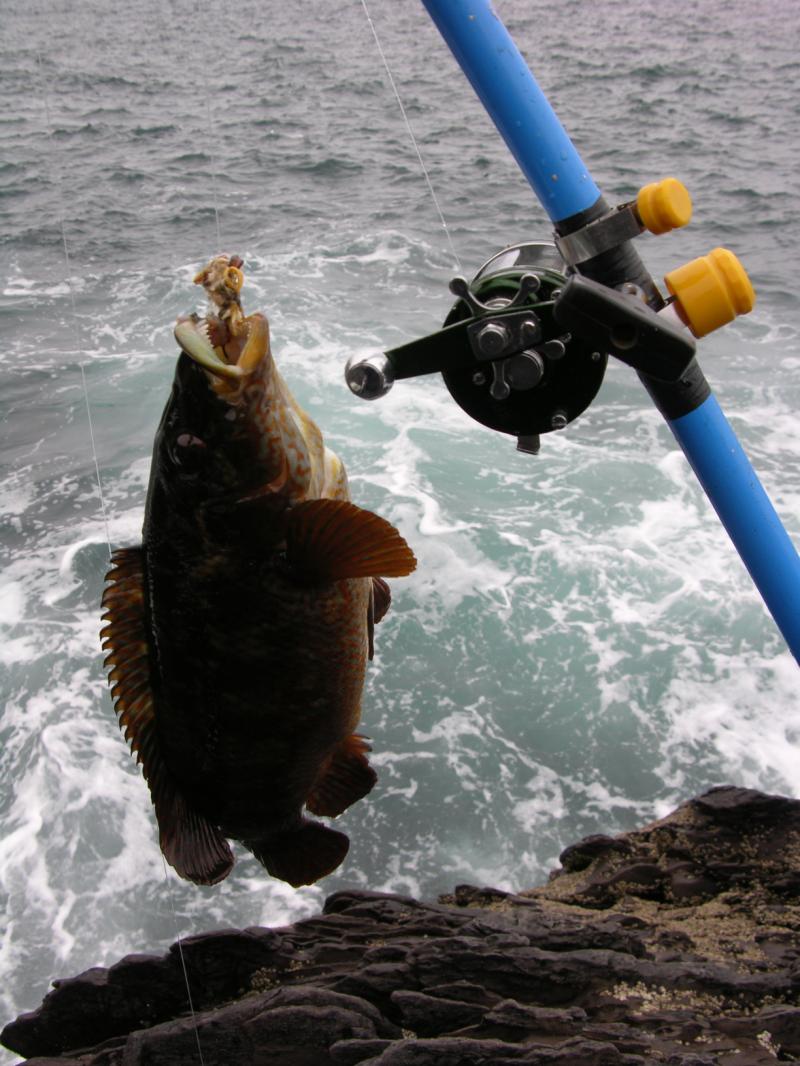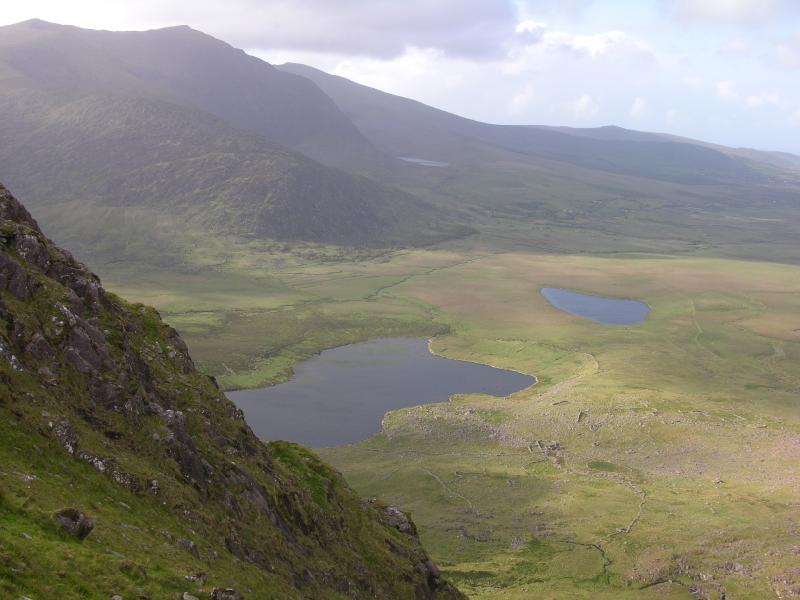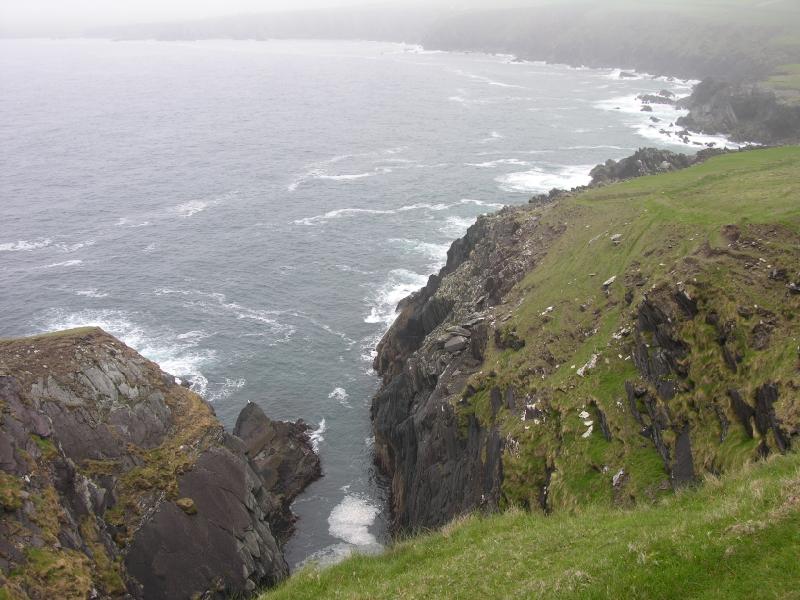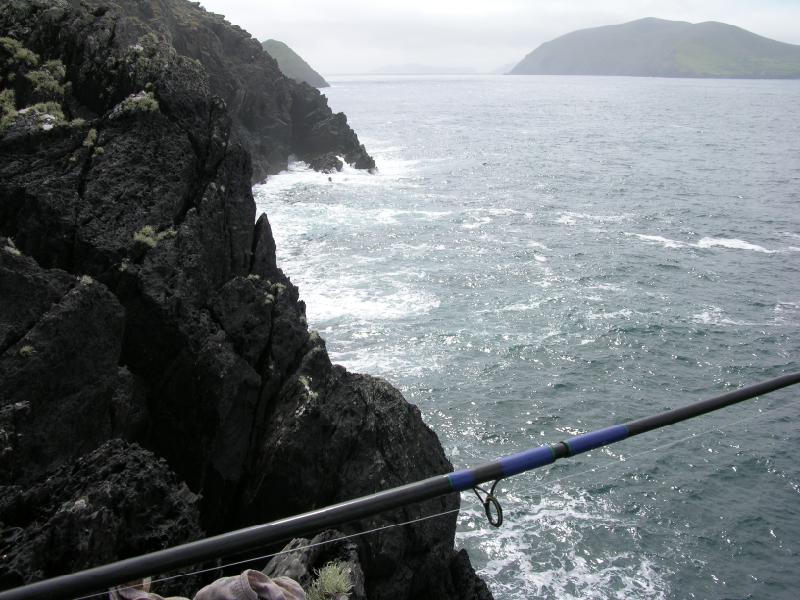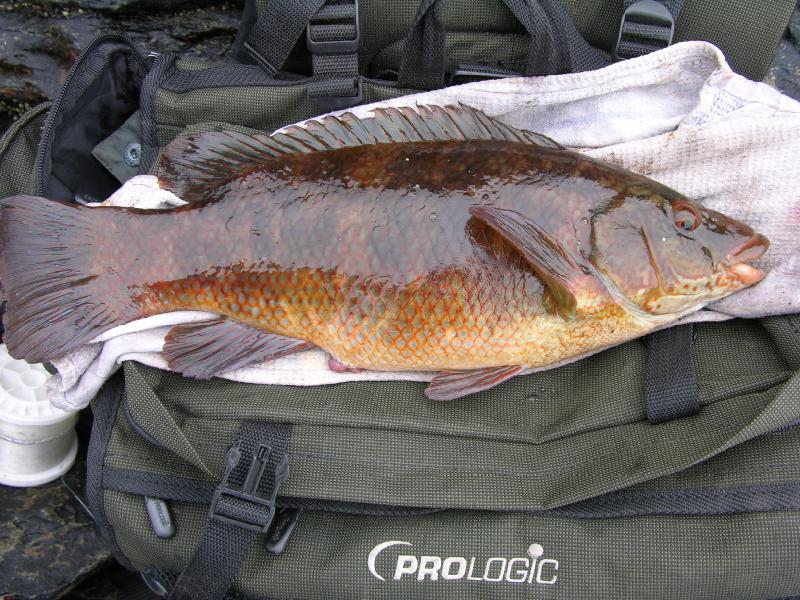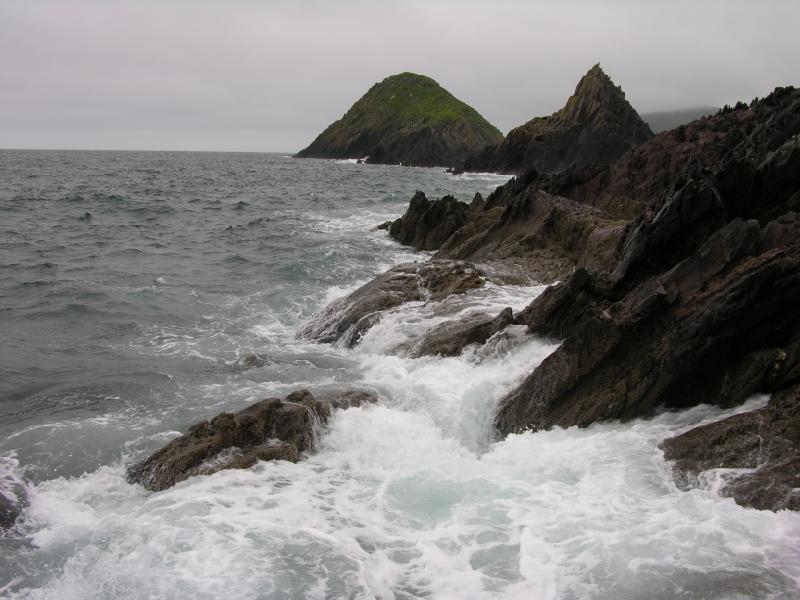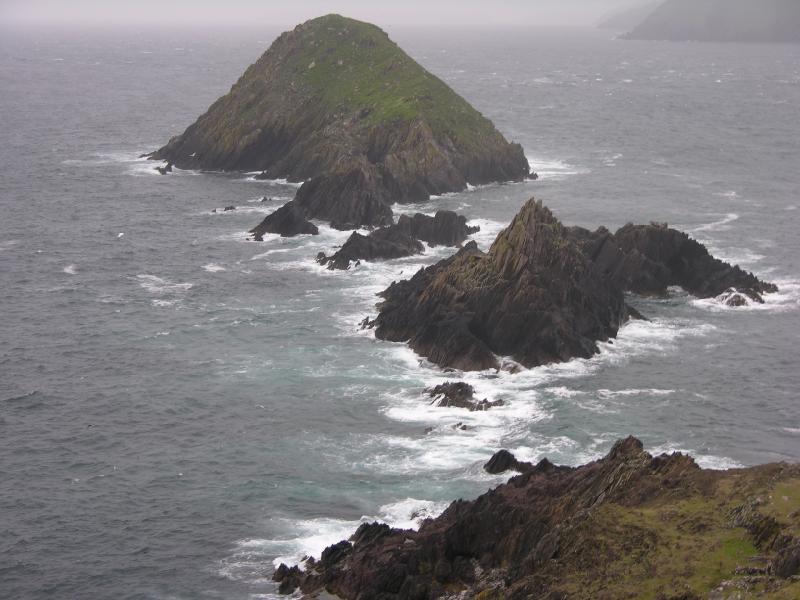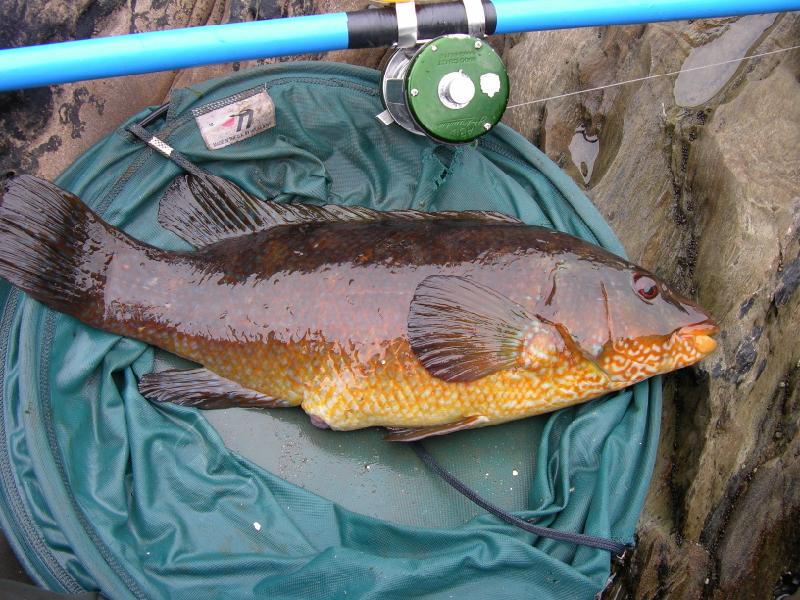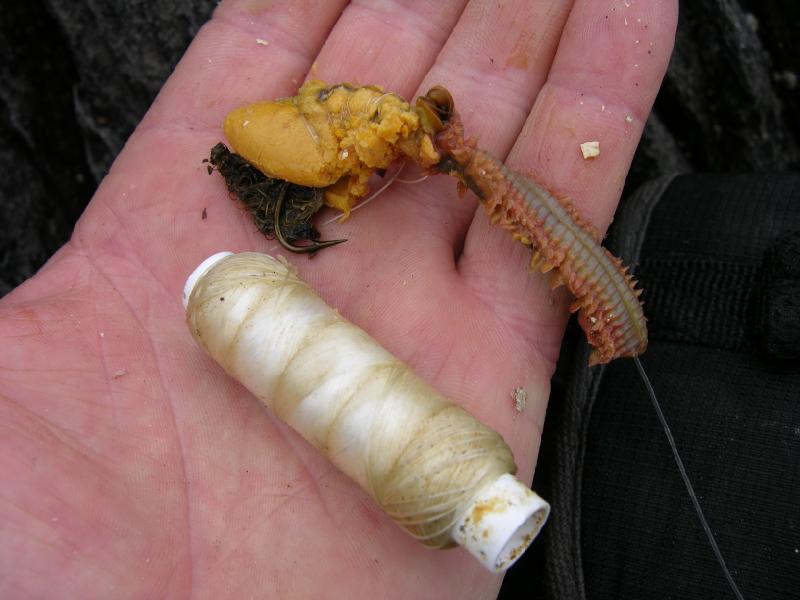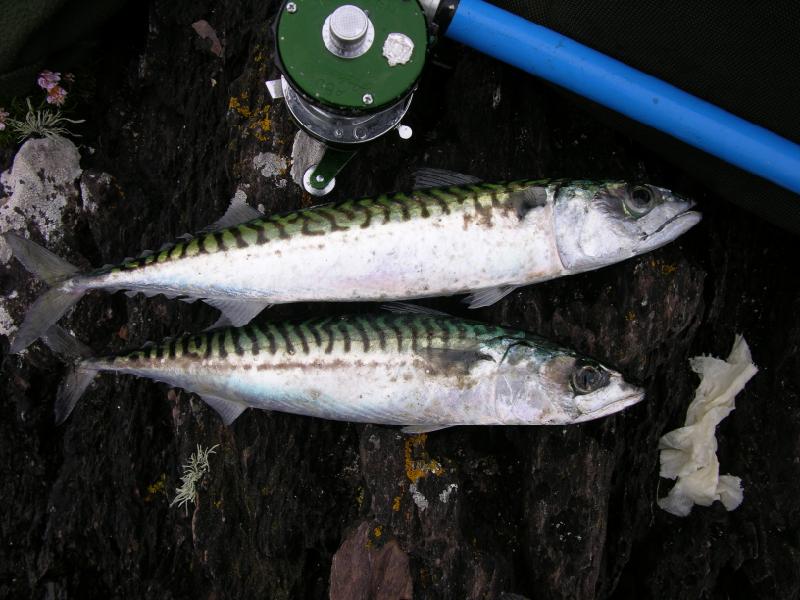Specimen Hunting Series Part 9 Ballan Wrasse
The Ballan Wrasse Challenge
Latin name (Labrus bergylta)
Irish record
4.3 kilos, taken at Clogher Head on 20.08.1983 by Bertrand Kron
Specimen weight
2.154 kilos or 4.75 pounds
The trip
Despite the fact that Ballans occupy almost every under water reef and kelp forest around our coast line, the capture of a specimen greater than four pounds twelve ounces is definitely not a foregone conclusion.
With thousands caught and released by shore and boat anglers each year, there are usually only a dozen or so specimens submitted to the committee for verification.
The north coast was once a fabulous area to target massive Ballan Wrasse, and I am quite sure that certain hot spots, with the potential to produce large fish, still exist. Unfortunately, I have not investigated these shore areas enough to guarantee a positive result, and so, it was a journey south yet again to the Kerry coastline where I know the odds for a specimen would be stacked in my favour.
County Kerry, and in particular, the Dingle Peninsula is a sea angler’s paradise. The rugged, mountainous landscape plunging into the sea merges perfectly with hidden coves and exposed surf beaches offering a wealth of fish species to target, and big, bold Ballans are no exception. It is this area that has appeared countless times in the specimen records; and now it was time to check for myself, the attraction of some of these famous angling landmarks.
The breath-taking view from the top of Connors Pass
On a clear day, the view from the top of the Connor Pass is breath taking and worth the trip in itself. Driving down into Dingle and along the coast offers miles of stunning, angling hot spots that leave the shore angler spoilt for choice. Today however, I want to fish a famous venue and have to force myself to ignore the wealth of fishy looking rock marks along the way.
On arrival at the headland of Slea Head, I soon realise that it is not just a small piece of rock sticking out into the sea, as I naively believed when scanning the map. In reality, it is a large land- mass that will require quite a bit of hiking and climbing to explore, especially as I have no idea of the hot spots to try. There is no other choice but to put on the hiking boots, and scale down the tackle kit to the absolute minimum required. This consisted of a rod and reel, small cooler box of bait, landing net and whatever tackle I could cram into the rucksack.
The first gulley that I checked, not for the feint hearted, and too dangerous for me!
The first gully encountered looked excellent, but I decided that it was too dangerous to negotiate. Being alone on this trip, I had broken the first rule of safety and had to be careful where to explore! (If you must travel alone, tell someone where you are going and when you expect to return).
The next mark along looked daunting, but by passing the rod and landing net down each ledge, I was able to slowly descend to a flat surface in relative safety. Threading the line through the rings, the anticipation of what may be waiting below was driving me crazy. I opted for a simple, one hook paternoster incorporating a rotten bottom, and baited up with a ragworm and mussel cocktail. This is the exciting part. When dropping a baited hook into unknown water for the first time, the shore angler has no idea whether the rod tip is going to nod violently, or simply, the end gear will get “snagged” up resulting in lost tackle.
Hot-spot number two, care was required in negotiating this cliff edge
Fortunately the rod tip not only nodded, but also bent violently as a powerful fish headed back to the safety of the kelp beds. Constant pressure forced its head up and out of danger, and before I knew it, a large Ballan thrashed on the surface. Mistake number two, a drop net would have been more suitable as the landing net was not long enough. There was nothing for it but to wind down and lift the fish up. I remember thinking that in this case, the choice of the light beach caster over the carp rod was a wise decision. This was a fabulous fish and required weighing. At four pounds and ten ounces it almost hit the specimen barrier, but not quite. A specimen on the first cast was asking a lot I know, but stranger things have happened in the past. Buzzing with excitement, the Wrasse was returned and a baited hook dropped back into the same area. There was no shortage of Ballans here, but they seemed to be coming up progressively smaller, almost as if there was some kind of pecking order, where the bigger fish had first choice and so on. Time for a move, and after the tiring sixty- foot ascent I decided that the next mark would have to be a little bit kinder on the body!
Fabulous hard-fighting Ballan, but just shy of the magical specimen barrier
After several stops, and difficult climbs that produced small to medium fish, I rounded the headland and immediately realised where I should have been fishing from the start! The rock marks here were a great deal more accessible and closer to the water, and every bit as “Wrassey” looking as the previous spots.
The outer head-land and my new hot-spot I eventually settled at
I decided on a change of bait, and put on one of the four hardback crabs I had picked up on the shore. A bite was instantaneous, resulting in another fine four-pounder that left me with mixed feelings. A fabulous fish, but was this the biggest one there? Using up the last of the crabs on three, size-able Wrasse, I had to revert to the ragworm/mussel combination, cursing myself for not lifting more hardbacks earlier.
A couple of juveniles followed before a thumping bite told me I had found another “lunker” hiding in the under-water jungle below. Even under pressure from the light beach caster, the fish managed to find safety amongst the kelp bed. It was a five- minute battle of cat and mouse before I finally coaxed the Wrasse out of hiding and into my waiting landing net. Pushing the scales round to four pounds and fourteen ounces, it scraped past the required weight and gave me my first Kerry specimen Wrasse.
Fat as butter, and just scraping past the specimen weight at 4lbs 14 oz
I could not have cut it finer as it transpired. The tide was ebbing and the Wrasse bites ceased. I noticed a few gannets that were diving eighty yards or so off shore and luckily, I had enough tackle in the rucksack to set up a couple of redgills on a paternoster rig to see what was about. They turned out to be Mackerel and Pollack chasing sand eels to the surface. I whiled away a few hours of fun before heading back on the long trek to the jeep. Standing on the headland, it was with deep regret that I had to leave this beautiful venue and its stunning scenery, but I know that the magical draw of the Kerry coastline will pull me back yet again in search of more species, and in particular, the battling Ballans of the Dingle Peninsula.
Bait
In my opinion, for sheer numbers of fish, the best all-round bait has to be ragworm. This bait will almost always guarantee a Ballan Wrasse over rough ground. However, small hardback, green shore crabs are almost as effective and have been known to sort out the quality fish. Mussel can be superb, but also try lugworm or limpet. Fresh peeler crab, as always, is an absolute winner. Occasionally, Wrasse are taken on lures, and in particular, small jelly-type worms on a lead-head. There are reports of anglers taking Wrasse on the fly. I have not tried this yet but I can only imagine that a large Ballan Wrasse on an eight-weight fly rod would be amazing.
Mussel-ragworm cocktail, that finally tempted the lunker
Tackle
A powerful carp rod and spinning reel combination are ideal if conditions dictate, loaded with thirty pounds braid or nylon. A thirty pounds b/s rig body and twenty pound hook lengths will cope with most situations. Strong Aberdeen hooks such as Kamasan or Mustad BLN in sizes 1 to 2/0 will hold a variety of baits and are capable of landing any Wrasse encountered. Keep the end tackle simple! A basic, one hook paternoster or one hook pulley rig is all that is required, but remember to incorporate a rotten bottom. This will allow the lead, should it become “snagged”, to break away without losing the entire rig, or, more importantly, the fish.
On this trip, I opted for my Conoflex “Flattie Fanatic”. It is a light beach caster, almost a Bass rod, coupled with an Abu 6500 multiplier loaded with thirty- pound nylon. As I only wanted to carry one rod, and did not know what to expect, I erred on the heavier side. The rucksack contained enough line for a refill should the reel “nest” on a cast, and extra line to tie simple paternoster rigs. Plenty of old lead weights, swivels, hooks etc, elastic thread, weighing scales and weigh sling, mobile phone, first aid kit, sandwiches, bottle of juice, spare jacket and a camera.
Some bonus Mackerel at distance, as the tide ebbed
Tactics
Wrasse tactics are simple. Target areas of submerged rock and weed in twenty to sixty feet of water. Keep the end gear as basic as possible as tackle losses in these in-hospitable venues are usually quite high. Bear in mind that Wrasse are primarily a summer species, although the warmer waters of the south coast allow for a longer season.
Interesting facts
There is surprisingly little detailed information to be found regarding Ballan Wrasse. They belong to the Labridae family of which there are over 500 species worldwide. Around our shores, there are five species that are commonly found. These are Ballans, Cukoos, Corkwing, Gold Sinny and Rock Cook, with Ballans being the largest species. Apparently all juveniles are born as females and are able to change sex between 4-14 years of age. Eggs are oval, white and sticky and laid from June to August in a nest of algae. The male guards the eggs from 1-2 weeks until the larvae hatch.




